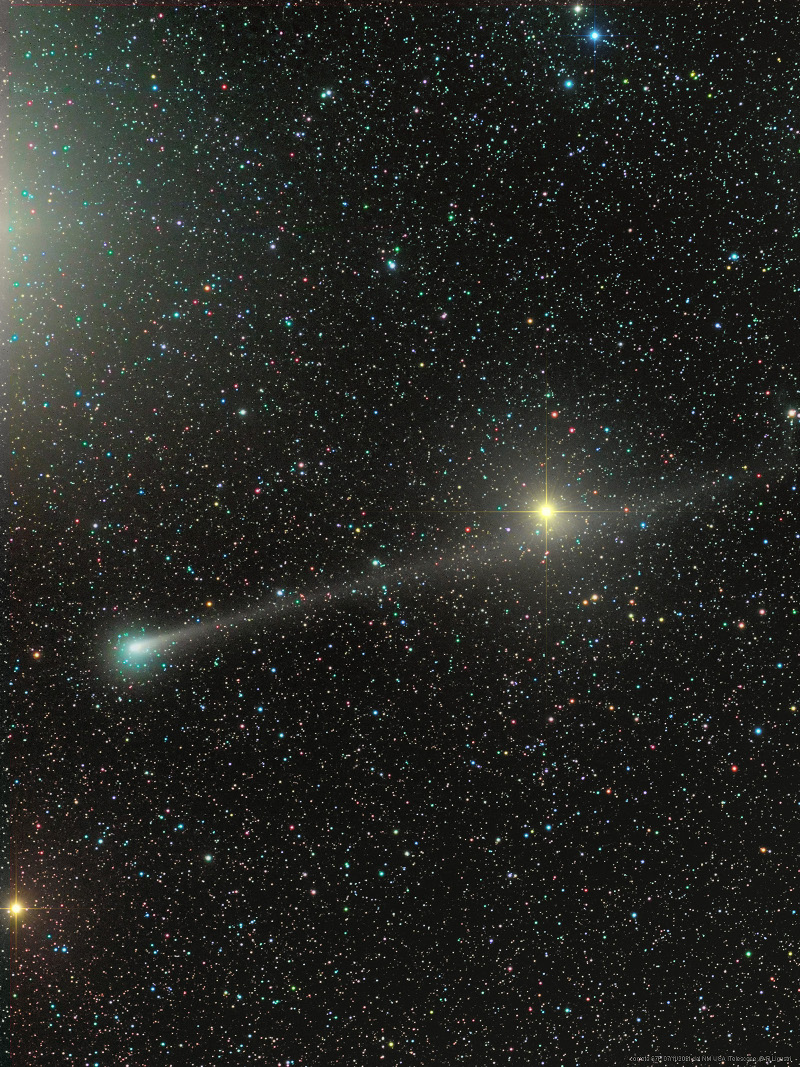双子座的罗塞塔彗星
(原标题: Rosetta's Comet in Gemini)
2021-11-13
浏览次数: 161
11月7日,这颗周期彗星楚留莫夫-格拉西门科彗星(67P)沿着它6.4年的轨道返回。这颗彗星的尘埃尾巴扫过双子座的背景恒星,向右上方延伸到双子座星宿。也被称为波鲁克斯,双子座最亮的恒星,就在视野的左上角。11月2日,丘留莫夫-格拉西门科号到达了2021年的近日点,也就是最接近太阳的地方。11月12日,这颗彗星最接近地球的近地点,距离地球约0.42天文单位,尽管它仍然太暗,无法单凭肉眼看到。这颗被充分研究过的彗星是由地球上的机器人在它最后一次穿越内太阳系时探测到的。现在,它以历史悠久的罗塞塔号宇宙飞船和菲莱号着陆器的最后安息之地而闻名。
查看原文解释
Returning along its 6.4 year orbit, periodic comet Churyumov-Gerasimenko (67P) is caught in this telescopic frame from November 7. Sweeping past background stars in the constellation Gemini the comet's dusty tail stretches toward the upper right to Upsilon Geminorum. Also known as Pollux, Beta Geminorum, Gemini's brightest star, shines just off the upper left edge of the field-of-view. Churyumov-Gerasimenko reached its 2021 perihelion or closest approach to the Sun on November 2. At perigee, its closest approach to planet Earth on November 12, this comet was about 0.42 astronomical units away, though it remains too faint to be seen by eye alone. The well-studied comet was explored by robots from planet Earth during its last trip through the inner solar system. It's now famous as the final resting place for the historic Rosetta spacecraft and Philae lander.
© CARA Project
